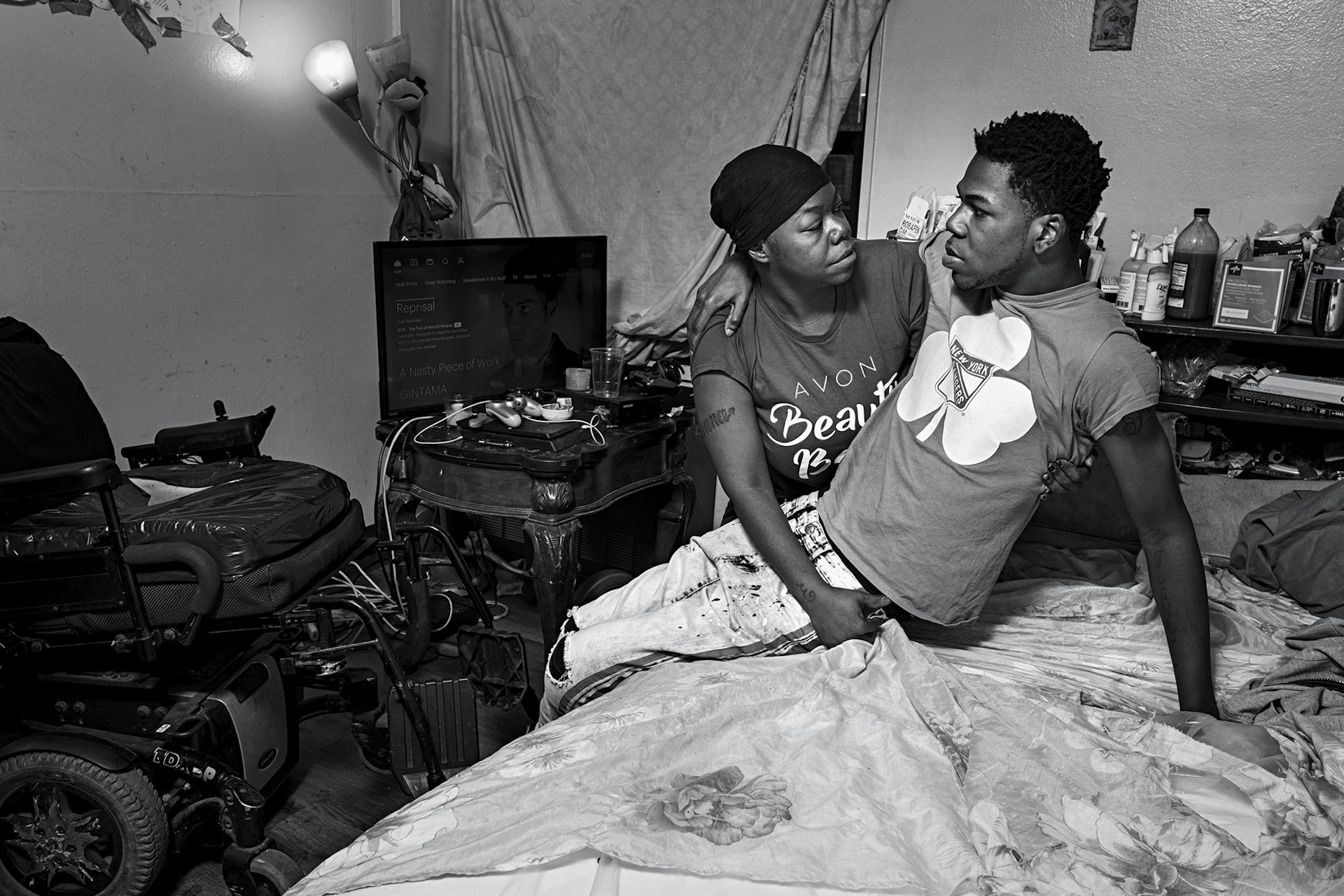In the ring with Mexico City’s legendary underground boxers
- Text by Miss Rosen
- Photography by David Hanes-Gonzalez

In the early 1980s, David Hanes-Gonzalez’s grandmother crossed the border from Mexico into the United States, making her way north to Chicago for work. She sent money back home to her four children to help them survive, and one-by-one they all eventually arrived in the States.
As a child, Hanes-Gonzalez regularly traveled back to Mexico but only to tourist spots. At the age of 27, he joined his mother on a voyage to her hometown, San Luis Potosi, to meet family members for the first time. The experience ignited a profound desire to create a deeper connection with his roots.
An avid amateur boxing fan, Hanes-Gonzalez took his first steps inside the ring when the pandemic began. “After a few months, I began to bring my camera to the gym, where I documented champion boxers and their training camps,” he says. “Then one day, a boxer explained to me how the Mexican fighting style is famous.”
In that moment, everything changed. Hanes-Gonzalez became obsessed, getting his hands on all the articles and videos he could – but it simply wasn’t enough. “I needed to experience Mexican boxing first-hand, so I went to Mexico City on a nine-day trip that later turned into three months,” he says.
“I wanted to build a project that would be championed by the boxing community,” Hanes-Gonzalez continues. “To do so, I needed to become a part of the community, which meant spending time with them, training with them and sharing meals together. This allowed trust and access that I wouldn’t have had otherwise.”
Over the past two years, Hanes-Gonzalez has amassed an archive of 25,000 photographs chronicling Mexico City’s legendary boxing scene. Now he spotlights selections in the new exhibition, No Te Dejes (“Stand Up For Yourself”).
Drawing inspiration from groundbreaking sports photographer Neil Leifer and Hector Garcia, the godfather of Mexican documentary photography, Hanes-Gonzalez has crafted an intimate portrait of sport, culture and community.
Although he began as an outsider, Hanes-Gonzalez’s passion and devotion mirrored that of the men, women and children who dedicate their lives to the sport. He met boxers training at a local park and shared the project with them. In turn, they invite him to take photos at their gym.
From there, the project snowballed and Hanes-Gonzalez was visiting gyms and attending fights in far-flung corners of Mexico City. “The best boxing gyms aren’t in the tourist areas and typically are labelled as being ‘dangerous,’” he says. “On the drive over, my Uber driver would ask questions like, ‘Who do you know here?’ ‘Where are we going?’ and ‘Can you please raise the window up?’”
Although nervous en-route, Hanes-Gonzalez’s anxieties immediately dissipated upon entering the gyms, where boxers greeted him with warmth, acceptance and gratitude.
“They say the journey is better than the destination and after two years I can say just that,” he says. “This project allowed me to visit parts of the city I wouldn’t have a reason to go to and develop relationships with amazing people. I got to experience Mexico at its purest form.”
David Hanes-Gonzalez: No Te Dejes is on view through October 21, 2023, at Dichroic House in Colonia San Rafael in Mexico City.
Latest on Huck

“I refuse to accept child poverty is a normal part of our society”: Apsana Begum MP on voting to scrap the cap
After seeking to “enhance” the King’s Speech by voting for the scrapping of the controversial two child benefit cap, the MP for Poplar and Limehouse lost the Labour Whip.
Written by: Apsana Begum

Is skateboarding really a subculture anymore?
With skate’s inclusion in the Olympics, Kyle Beachy asks what it means for the culture around the sport, and whether it’s possible to institutionalise an artform.
Written by: Kyle Beachy

Autism cannot be cured — stop trying
A questionable study into the ‘reversal’ of autism does nothing but reinforce damaging stereotypes and harm, argues autistic author Jodie Hare.
Written by: Jodie Hare

Bristol Photo Festival returns for second edition
After the success of it’s inaugural run, the festival returns this autumn with exhibitions, education and community programmes exploring a world in constant motion through still image.
Written by: Ben Smoke

Documenting the life of a New York gang leader paralysed by gun violence
New photobook ‘Say Less’ is a complex yet humanising look into a life wrecked by gun violence and organised crime.
Written by: Isaac Muk

The woman who defined 80s Hip Hop photography
A new exhibition brings together Janette Beckman’s visionary and boundary pushing images of an era of cultural change and moral panic.
Written by: Miss Rosen










